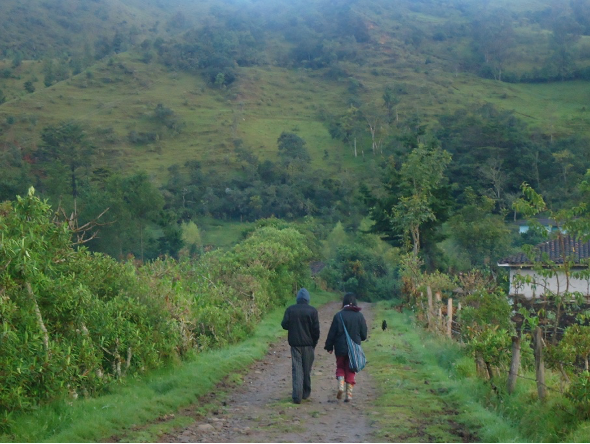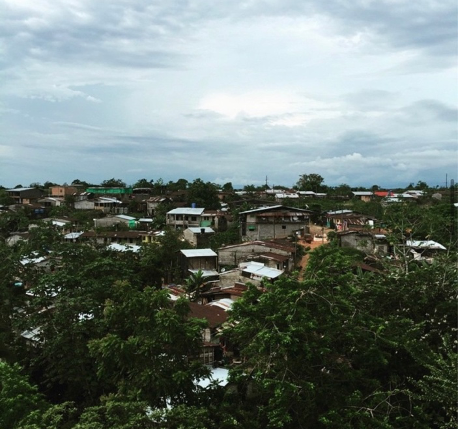No peace for Colombia: political violence in the post-agreement
By Camila Páez Bernal

By Camila Páez Bernal
Four years after the peace agreement was signed, Colombia still faces indiscriminate killings and a high degree of political violence. Colombia’s history is a story of controlling civil society through the use of terror and violence with the objective of maintaining the dominance of economic elites and the concentration of political power. The peace agreement of 2016 has not allowed an escape from an unending cycle of violence and power perpetuation rooted in colonization and modernization discourses. Political violence is becoming a daily occurrence in some areas of the country. Sadly, we face the risk of its normalization in the light of a government consciously ignoring evidence of its increase.
By November 2020, 254 social leaders had been killed in Colombia. This is not a new phenomenon. According to Front Line Defenders Organization, in 2018 and 2019 Colombia was the country with highest number of murders of human rights activists. Indepaz (the Colombian NGO monitoring violence and creating a mechanism for consolidating peace) affirms that since the peace agreement, in 2016, until August 2020, 1000 social leaders and human rights activists have been murdered. This has only escalated the violence in the country. According to Indepaz, the country had seen 74 massacres with a death toll of 291 civilians between January 1-November 16, 2020.
Why has violence increased in a country that is supposed to be in a post-agreement period? Is this a return to the violence experienced in the last decades of the 20th century, and the beginning of the 21th century? What is the role of the state? The response seems to lead us to the enduring conflict between local and rural communities with economic elites for the tenure of land, and the simultaneously weak and repressive unequal presence of the state. Plus, the continuously increasing disconnection between the government and civil society has increased popular discontent and lack of protection mechanisms to prevent violence against civilians, leading to the local intensification of illegal armed actors’ presence, economic elites’ concentration of power and properties, and legal armed actors’ excessive use of force.
The remains of paramilitarism, the criminal gangs, the inequality, and the long-standing locals’ disputes over natural resources and territories are explanatory factors for the systematic killing of rural leaders. In local territories, social leaders are acknowledged and respected actors in their communities and are behind collective action efforts for the environment and a fair distribution of property. Moreover, rural leaders can be seen as threatening to economic elites and armed actors interested in natural resources and maintaining unequal land distribution.
My research examines the connection between land claims and the homicides of rural leaders. Law 1448, implemented in 2011, stipulates the comprehensive care, assistance, and reparative actions that must be provided to victims of Colombia’s armed conflict. This law provided displaced and dispossessed citizens to re-claim their properties through the Land Restitution Unit. The numbers of these land claims per year go hand in hand with the number of killings of rural leaders: when land claims rise, so do killings.

Land claims are intended as reparation, and yet have instead put local populations—and especially social leaders—at risk. The killings are simultaneously a rational tactic and a strategic choice perpetrated by armed actors to protect particular economic interests. On the one hand, targeting social leaders eliminates visible leadership within these communities: the very men and women who raise their voices against economic elites and extractive projects. On the other hand, the killings are strategic because they generate fear within the local population. The objective is clear: increasing control over the population and diminishing dissent and disputes over the territories.
This violence continues with relative impunity. Powerful groups are behind this systematic violence and the use of terror as a control tool. And what about the state? Why has the Colombian state allowed these crimes to go unpunished? There are two possibilities though neither excuses the state from its responsibilities. First, Colombia’s failures may be due to the absence of effective state institutions in rural areas. Second, a more nefarious explanation, is that the state turns a blind eye to this violence in an effort to satisfy economic elites.

Continued violence ultimately harms possibilities for political difference in rural areas, and the state’s lack of intervention to prevent violence seems to contribute to deterring active political dissent and difference. In Colombia, not only does the land belong to a small proportion of the population, but so does political power. Especially in local areas, it can be dangerous to be a voice advocating for political change. It can cost you your life. A post-agreement society that is not able to generate mechanisms for a peaceful transition and local political scenarios for multiples voices and positions is condemned to violence and solitude. Like famed Colombian novelist Gabriel García Marquez, wrote “races condemned to one hundred years of solitude did not have a second opportunity on earth”. Colombia is repeating its history. It is a country that historically has denied the existence of political opposition, dissent, and difference, and because of this the hope for the success of the agreements signed in 2016 seems further away than ever.

Camila Páez Bernal is currently a Fulbright scholar and a Ph.D. student at the School of Politics and Global Studies at Arizona State University. She holds a double B.A. degree in anthropology and philosophy from Universidad Externado (Colombia), and an M.A. in cultural studies from Universidad Javeriana (Colombia). Her research interests are women’s political participation, and political violence in Latin America, with a critical and feminist perspective.